Hyo Culture Ppuri Festival (대전 효문화뿌리축제)
15.8 Km 14410 2023-09-14
47, Ppurigongwon-ro, Jung-gu, Daejeon
+82-42-606-6290
Hyo Culture Ppuri Festival is dedicated to finding the roots of the ancestry of unique family clans and learning traditional filial piety. The festival's venue Ppuri Park was opened in 1997 as a family-friendly park to raise awareness of recognizing the importance of ancestral roots. The park has a statue dedicated to 136 unique family clans, tracing their origins. Korea Genealogy Museum is also at this park, preserving genealogy archives.
Ppuri Park (뿌리공원)
15.9 Km 41579 2021-08-18
79, Ppurigongwon-ro, Jung-gu, Daejeon
+82-42-288-8310
Ppuri Park was created under the theme of filial piety, one of the overriding values of Korean society. Opened on November 1, 1997, the park occupies a plot of land measuring 109,091 m² and is filled with unique sculptures and art pieces that remind visitors of their family ties. Other main points of interest at Ppuri Park include the Deep-rooted Spring (symbolizing the 12 jisin/gods of the earth), a waterfront stage, grass square, observation deck, and recreational forest. Another must-visit attraction is the Samnam Memorial Tower, which represents the harmony and cooperation between the Honam and Yeongnam regions of Korea.
Gyeryongsan National Park (계룡산국립공원)
16.0 Km 48858 2021-09-06
327-6, Donghaksa 1-ro, Gongju-si, Chungcheongnam-do
+82-42-825-3002
Gyeryongsan National Park stretches across the cities of Daejeon, Gongju, and Nonsan in Chungcheongnam-do and was made a national park on December 31, 1968. The name of the mountain comes from the fact that the ridgeline looks like a dragon wearing a chicken's crest on its head. The topographical features are what make this mountain stand out and its mysterious folklore is what makes it so interesting. The park features many peaks, including the main peak Cheonhwangbong (alt. 845.1 m), as well as Sambulbong, Yeoncheonbong, and Gwaneumbong Peaks. This mountain is famous for its many interesting sites, with its fantastic rock structures and Yongmunpokpo Falls on the west, Eunseonpokpo Falls to the east, and Amyongchu and Sutyongchupokpo Falls in the south.
In spring, cherry blossoms bloom along the path to Donghaksa Temple, and during summer the lush green of the valley is very beautiful. During fall, the maple trees reveal their crimson colored leaves around Gapsa Temple and Yongmunpokpo Falls. The snowcapped peak of Sambulbong in winter is simply breathtaking. Gyeryongsan is full of rare animals and plants, beautiful waterfalls and a rich history with mysterious legends and cultural treasures. To the east is Donghaksa Temple; northwest, Gapsa Temple; southwest, Sinwonsa Temple; and southeast, Yonghwasa Temple.
Sikjangsan Cultural Park (Sunrise Observatory) (식장산 문화공원(해돋이전망대))
16.1 Km 35273 2023-02-09
32-834, Secheongongwon-ro, Dong-gu, Daejeon
Sikjangsan (623.6 meters) is a mountain spanning three regions - Dong-gu of Daejeon, Gunbuk-myeon and Gunseo-myeon of Okcheon-gun. As the tallest peak in the city located in the southeastern part of Dong-gu, Daejeon, it stands proudly next to great mountains in neighboring regions such as Seodaesan, the tallest peak in Chungcheongnam-do (904 meters), and Daeseongsan, the tallest in Okcheon (705 meters). Home of a 4.82 million-square-meter large, natural ecosystem preservation forest designated by the city, Sikjangsan is an ecological repository featuring plants of 224 species, 45 varieties, 187 genera, and 78 families; 45 kinds of mammals such as roe deer, squirrels, wildcats, raccoons and bats; over 100 types of birds; reptiles; and amphibians.
Sikjangsan Cultural Park is an ecological park that continues from Secheon Park to Sikjangsan Sunrise Observatory. The cultural park was established at the peak of the mountain, which had been regarded as one of the best nightscape viewpoints in Daejeon. A traditional tower built inside the cultural park adds a sense of classical dignity. An observatory from which the entire city can be seen in a single view is also located here. People of all ages and genders visit the tower and observatory to enjoy the expansive view of Daejeon.
Manghyang Bibimguksu Sejong Branch (망향비빔국수 세종)
16.3 Km 124 2024-03-20
4 Bareun 7-gil, Sejong-si
+82-44-864-2042
Manghyang Bibimguksu is a Korean noodle specialty restaurant located in Sejong Administrative City. Its signature dish is bibim guksu (spicy noodles), which is spicy noodles mixed with a special sauce. Additionally, they offer other dishes such as janchi guksu (banquet noodles), mandu, kimchi mandutguk (kimchi mandu soup), and dongaseu (pork cutlet). Nearby, there's the Ogarnangtteul Neighborhood Park, providing a pleasant setting for a meal and a stroll.
Byeolcheonji Sikdang (별천지식당)
16.4 Km 29268 2024-02-15
29 Sanseo-ro 1659beon-gil, Dong-gu, Daejeon
Byeolcheonji Sikdang is a Korean nutritious food restaurant renowned for its specialization in baeksuk (whole chicken soup). Their standout dish is oribaeksuk (whole duck soup), meticulously prepared with cordyceps and a blend of traditional medicinal herbs to enrich both its flavor and health benefits. Additionally, the restaurant is acclaimed for its baeksuk made with native chicken and galbi tang (galbi soup). Set next to a serene pond, Byeolcheonji Sikdang provides a peaceful atmosphere for guests to enjoy their meals.
Donghaksagyegok Valley (동학사계곡)
16.7 Km 35878 2024-02-28
327-6 Donghaksa 1-ro, Banpo-myeon, Gongju-si, Chungcheongnam-do
Donghaksagyegok Valley is a 3.5km-long valley located near Donghaksa Temple within Gyeryongsan National Park in Gongju-si. It is surrounded by lush green forests where wildflowers bloom, and the sound of clear water and birds can always be heard. The valley features attractions such as Donghaksa Temple, Eunseonpokpo Falls, and wild birds. While beautiful in all seasons, it is most stunning during spring when everything is in vibrant green.
Gujeolsa Temple (구절사)
16.8 Km 19158 2024-02-26
226, Sangjung-gil, Gunseo-myeon, Okcheon-gun, Chungcheongbuk-do
Gujeolsa Temple is a Buddhist temple located deep within the Sikjangsan Mountain in Okcheon. It was founded in 1393 and was rebuilt in 1933 to its present appearance. The road from the radio tower fork to Gujeolsa Temple in Sikjangsan Mountain’s hiking trails is lush with acacia trees, which are in full bloom in May. Another sight that should not be missed is the fog shrouding the foot of the mountain in spring and fall.
E-An Land (이안숲속)
16.9 Km 18071 2020-04-24
25, Sumogwon-gil, Gongju-si, Chungcheongnam-do
+82-41-855-2008
E-An Land Forest was established in 1999 when 1,836 arbor species and 1,418 herb species were planted on a land area of 1,118 hectares. The forest features a tropical garden and various other exhibition gardens, as well as thematic spaces like the Haneul Maru. The forest was finally completed in 2006. Inside the arboretum, there are various things to see such as the herb village, parakeet exhibitions, a pine tree garden, and man-made cave. There is also a mini golf course and an outdoor swimming pool. Visitors can also use the onsite pensions and the auto camping site for accommodation, making the E-An Land Forest a great place for family and group visitors.
Gongju Donghaksa Temple (동학사(공주))
17.2 Km 33524 2020-03-16
462, Donghaksa 1-ro, Gongju-si, Chungcheongnam-do
+82-42-825-2570
Located in the east valley of Gyeryongsan Mountain in Hakbong-ri, Banpo-myeon, Gongju, Donghaksa Temple is the first and the oldest existing academic institute for female monks. Home to about 150 monks who study and practice Buddhism, the temple is the most visited spot on all of Gyerongsan Mountain due to its history, convenient location, and visitor facilities.
The elegant structure of the temple is x_heighted by the majestic view of Munpilbong Peak to its front. In the spring, many visitors come to the temple to see the cherry blossom tunnel, a 3 kilometer pathway from Bakjeongja three-way intersection to Donghaksa Temple. Every year since 1993 the temple has also been the venue of the Donghaksa Spring Flower Festival.
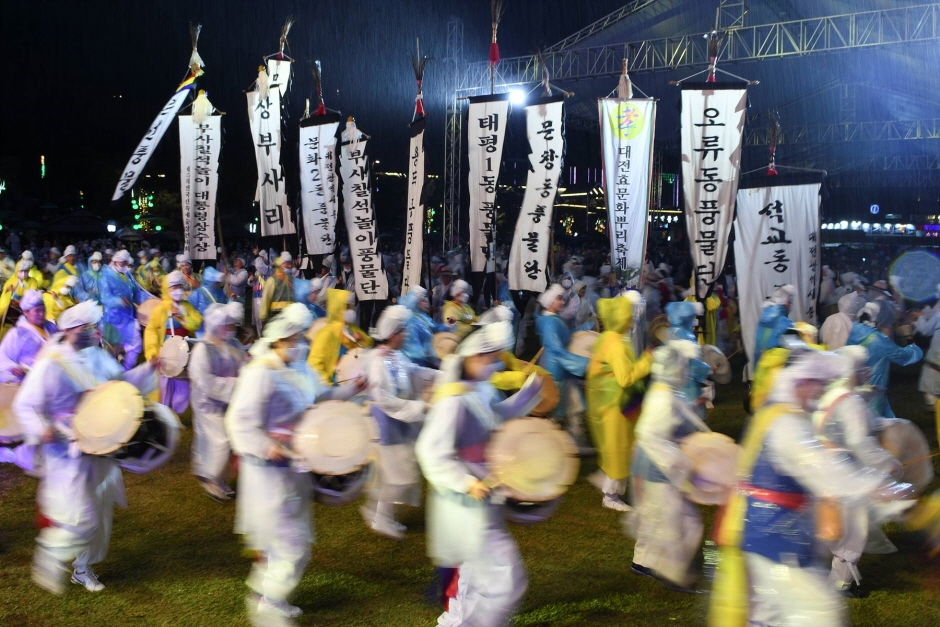

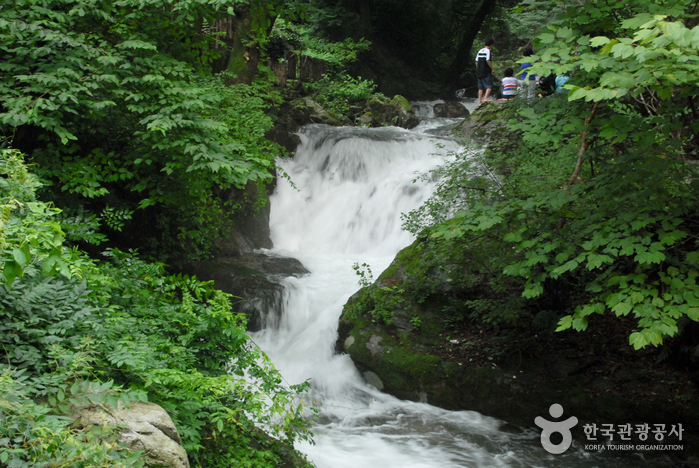
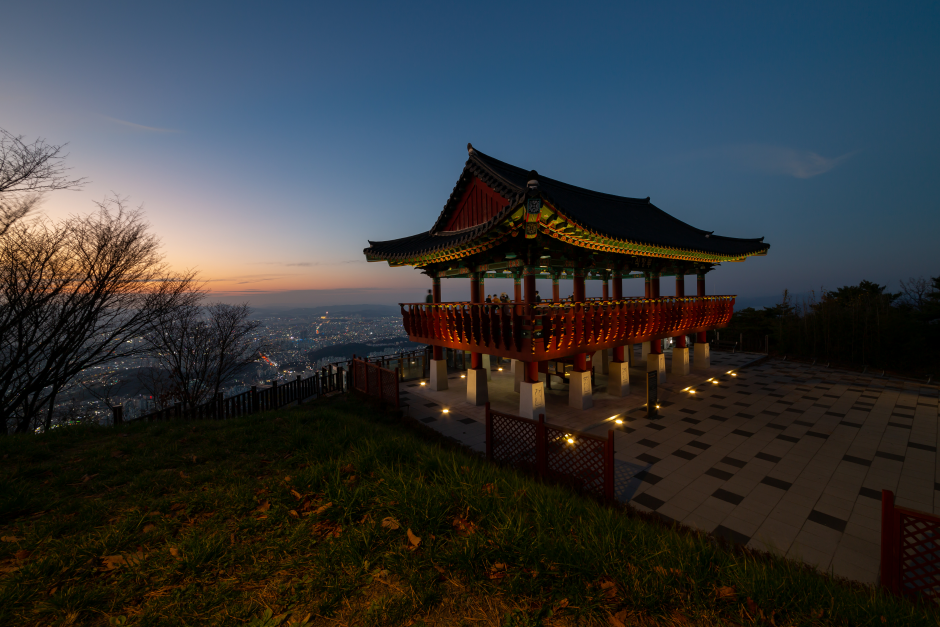
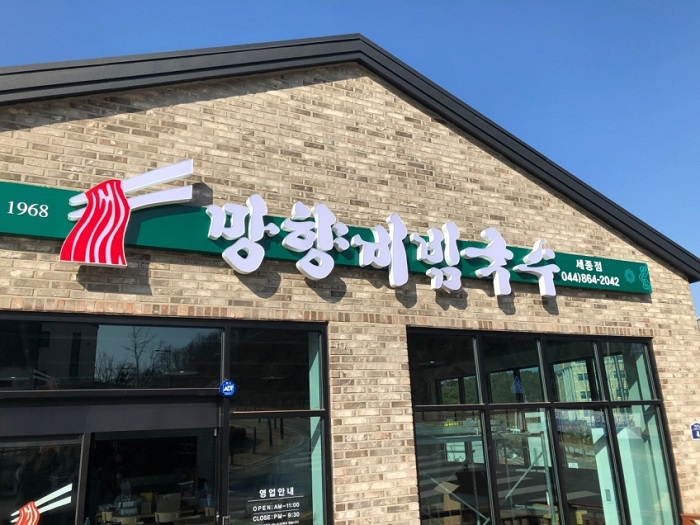
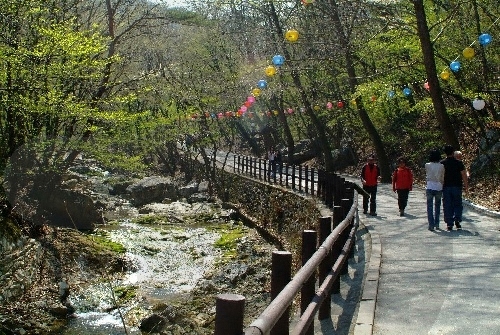
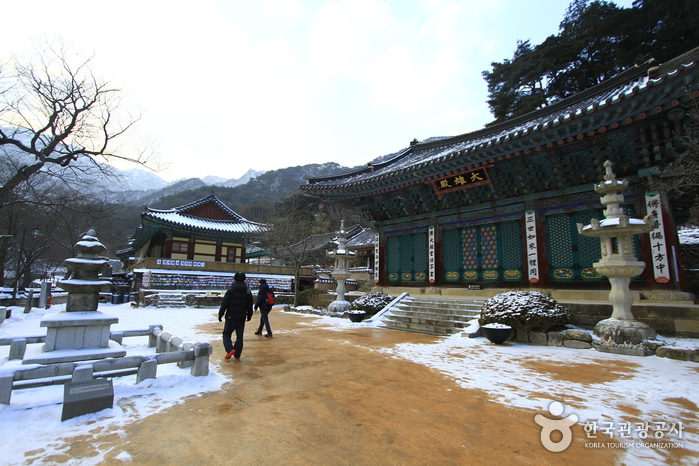
 English
English
 한국어
한국어 日本語
日本語 中文(简体)
中文(简体) Deutsch
Deutsch Français
Français Español
Español Русский
Русский